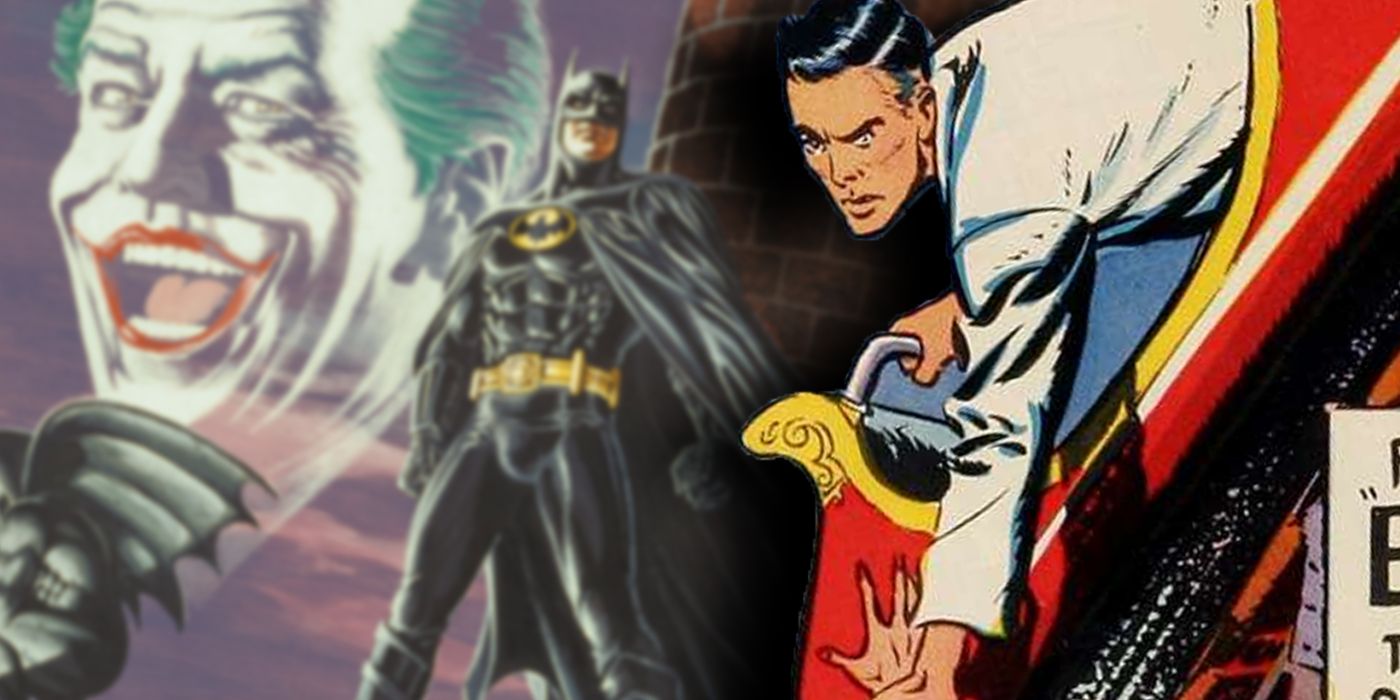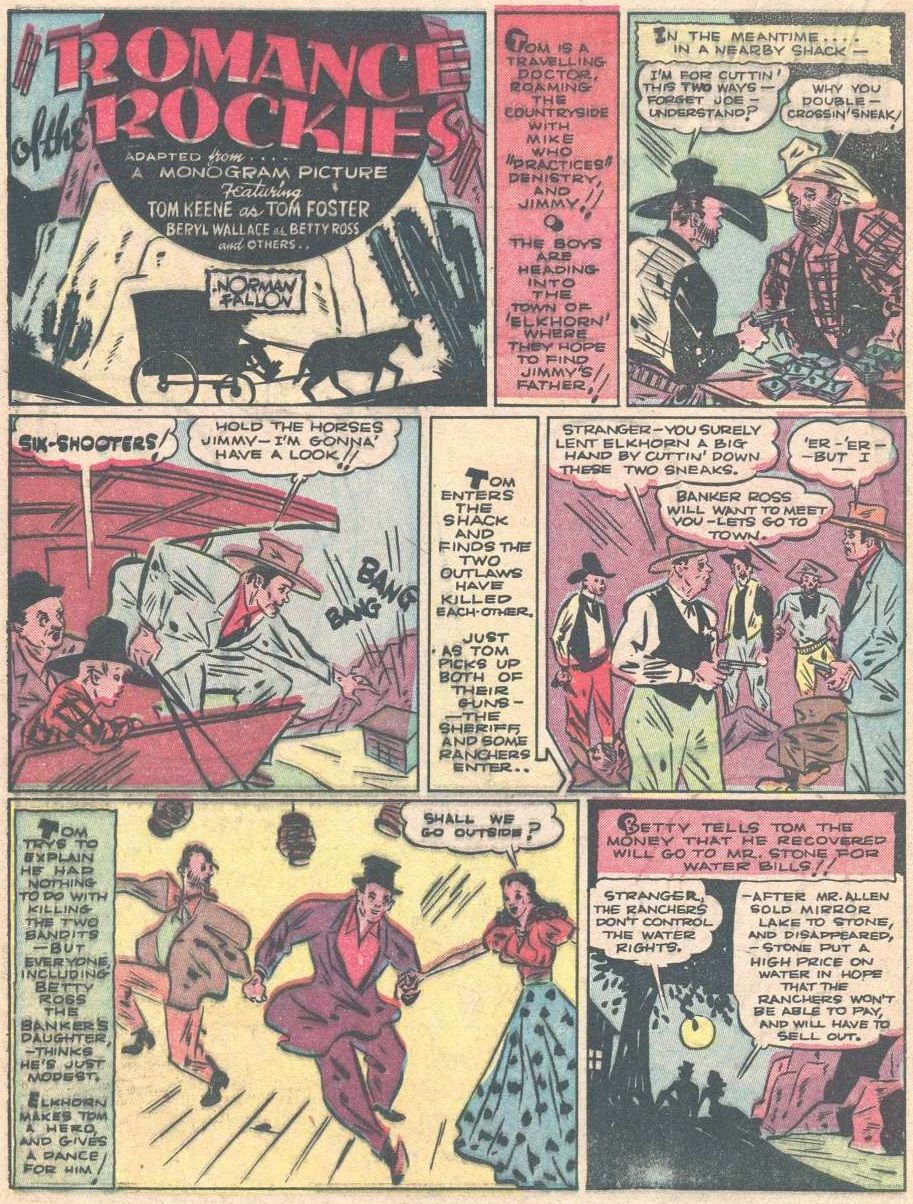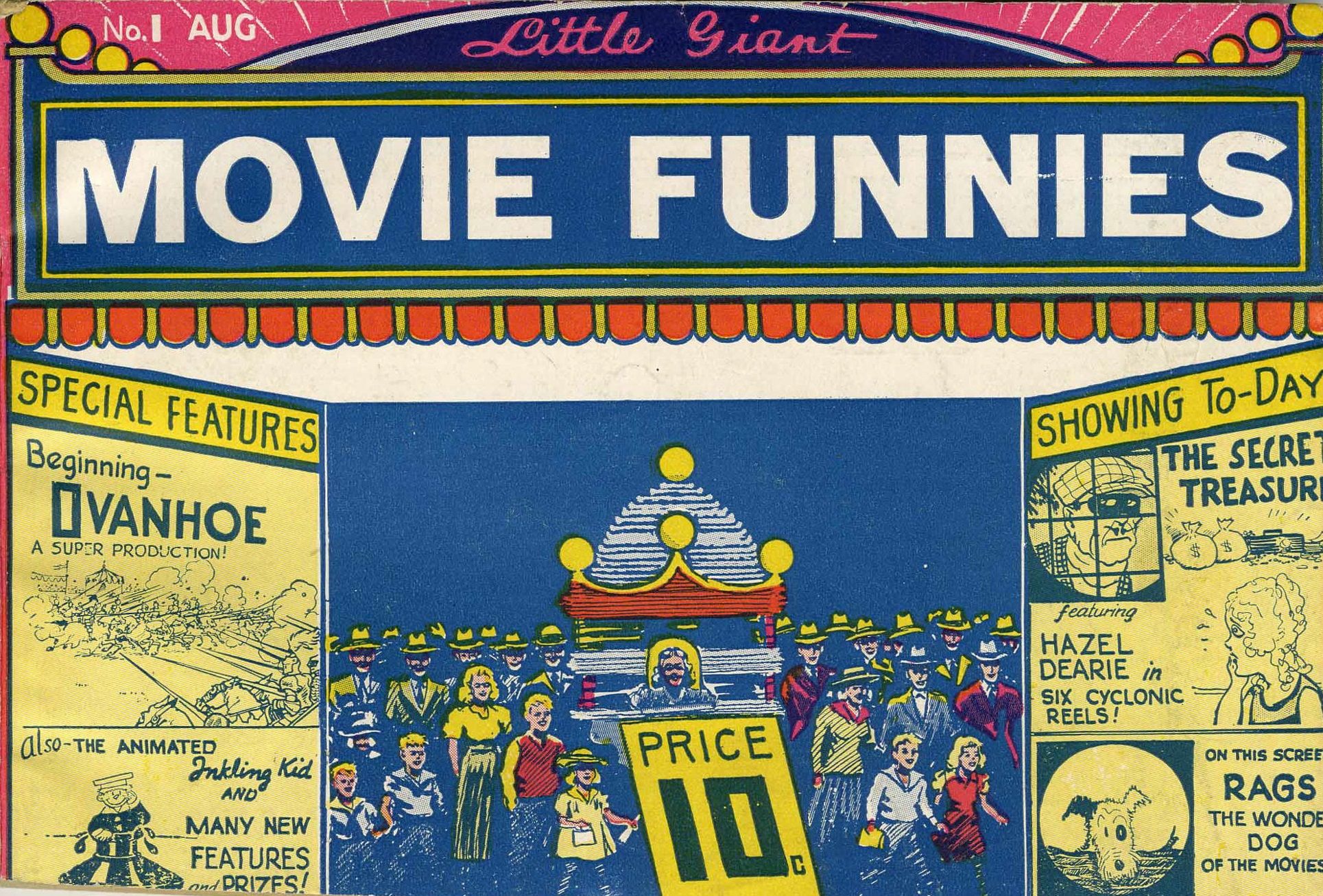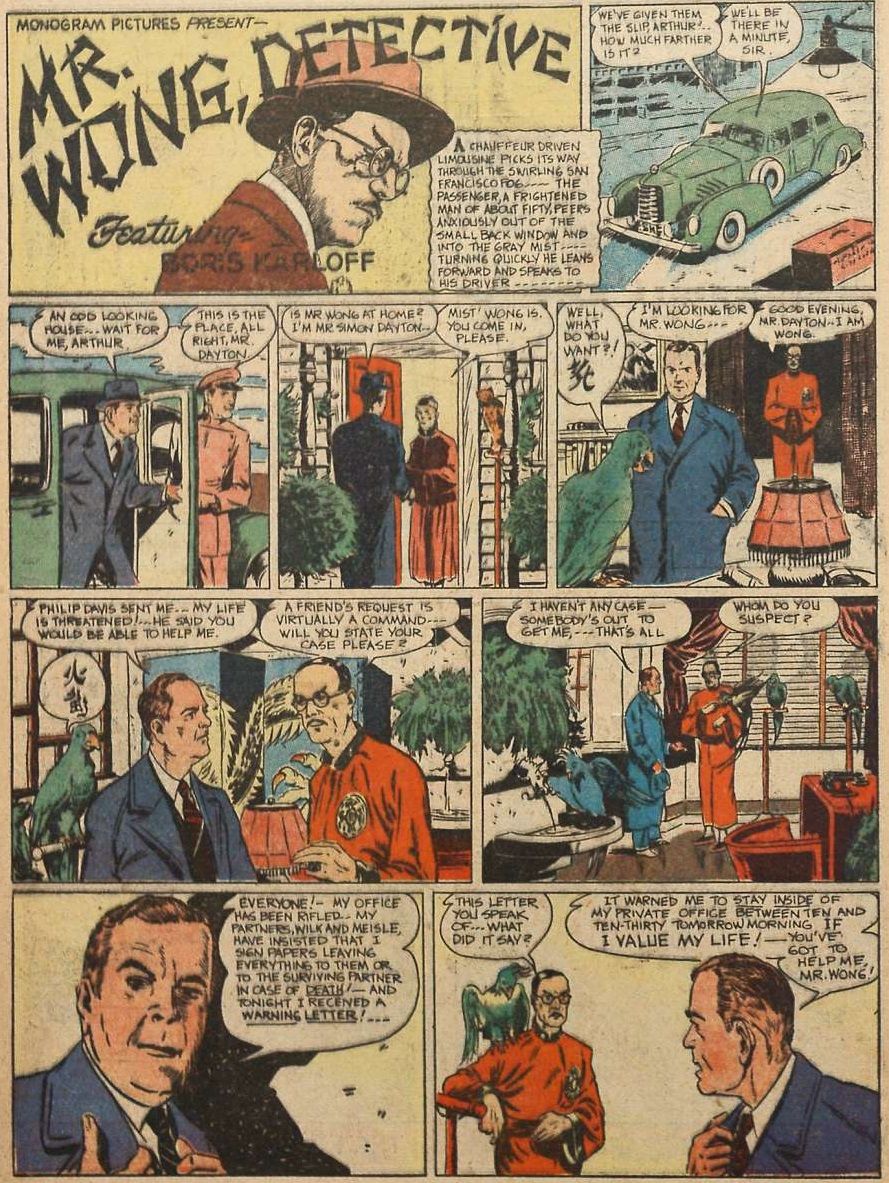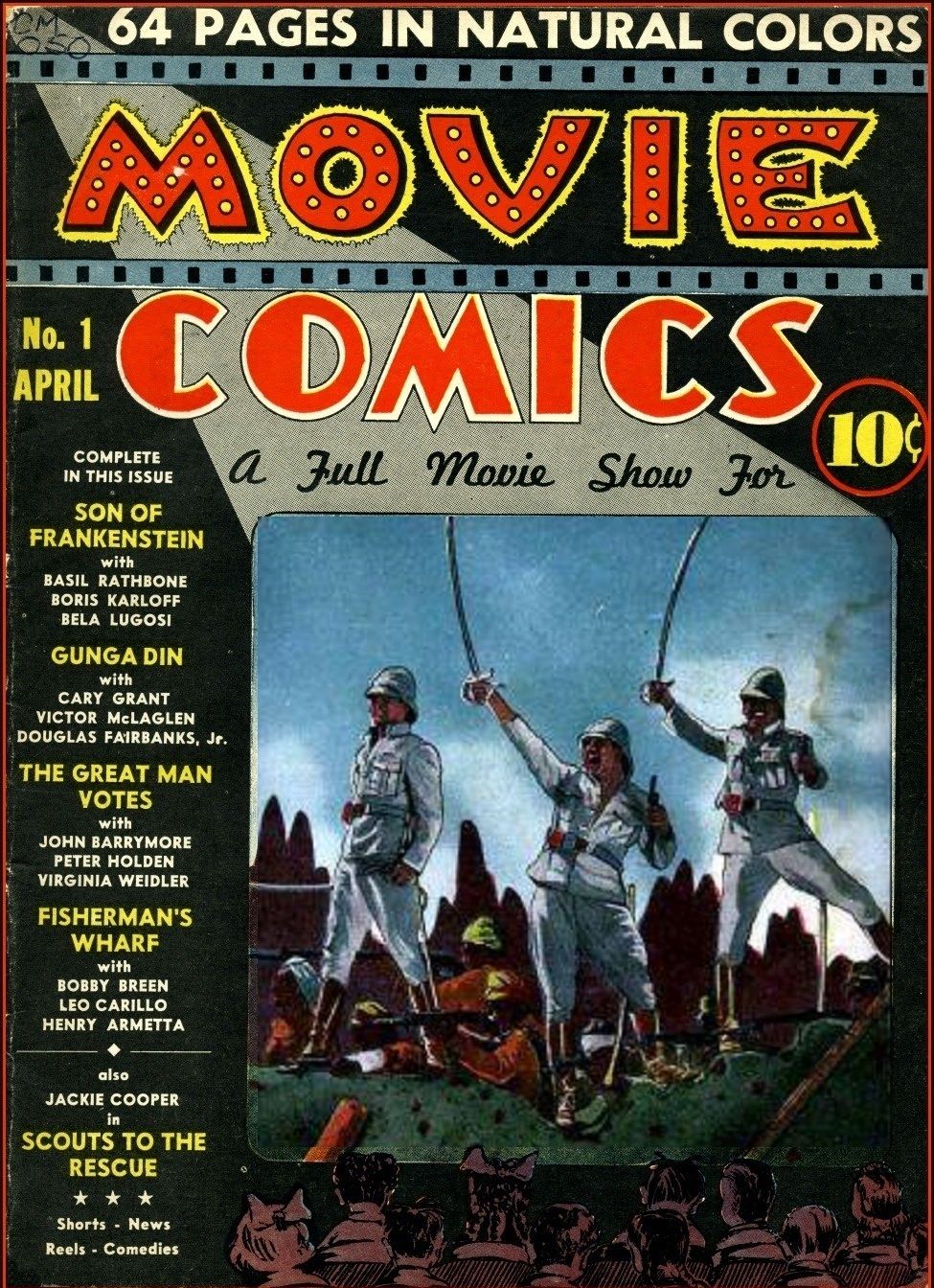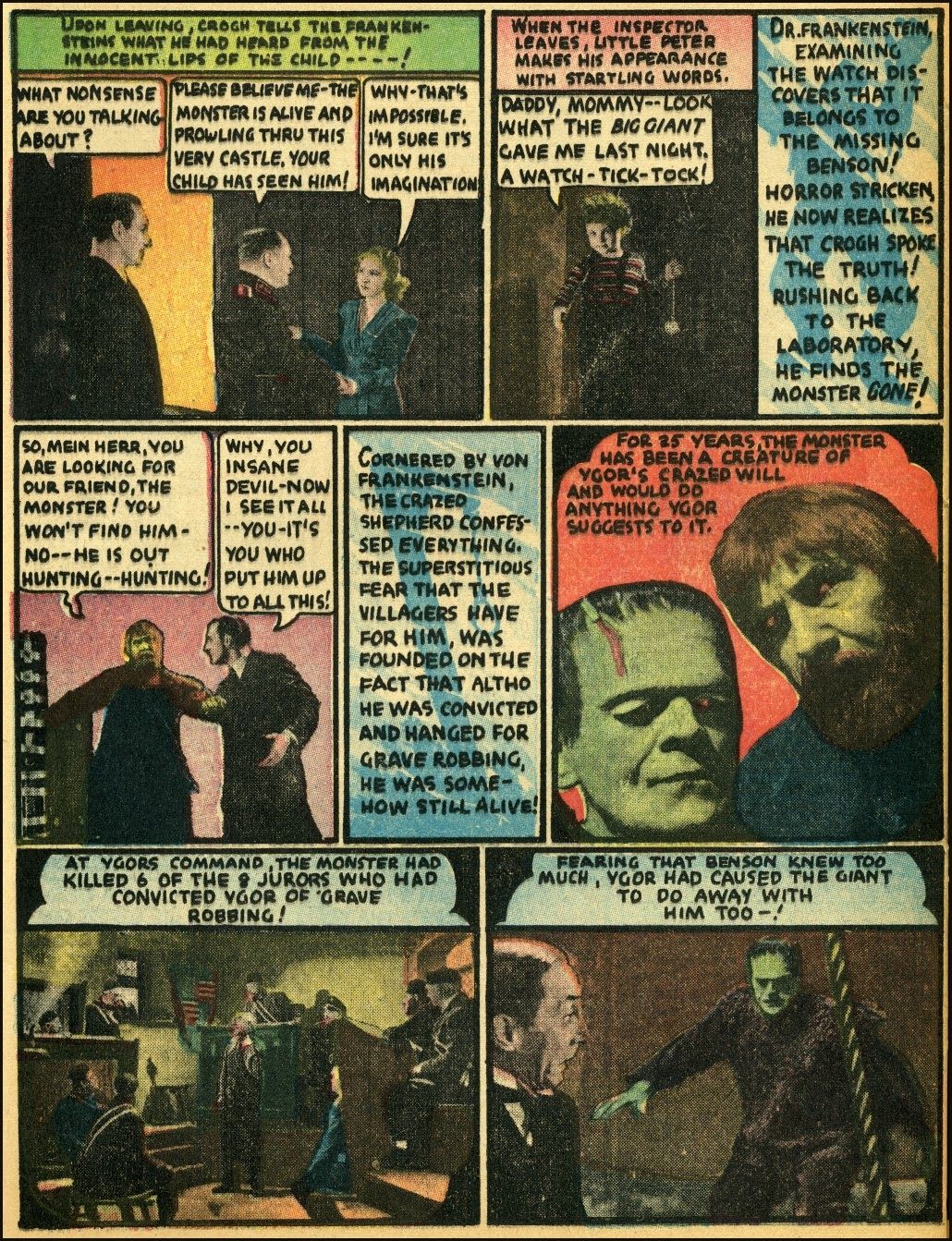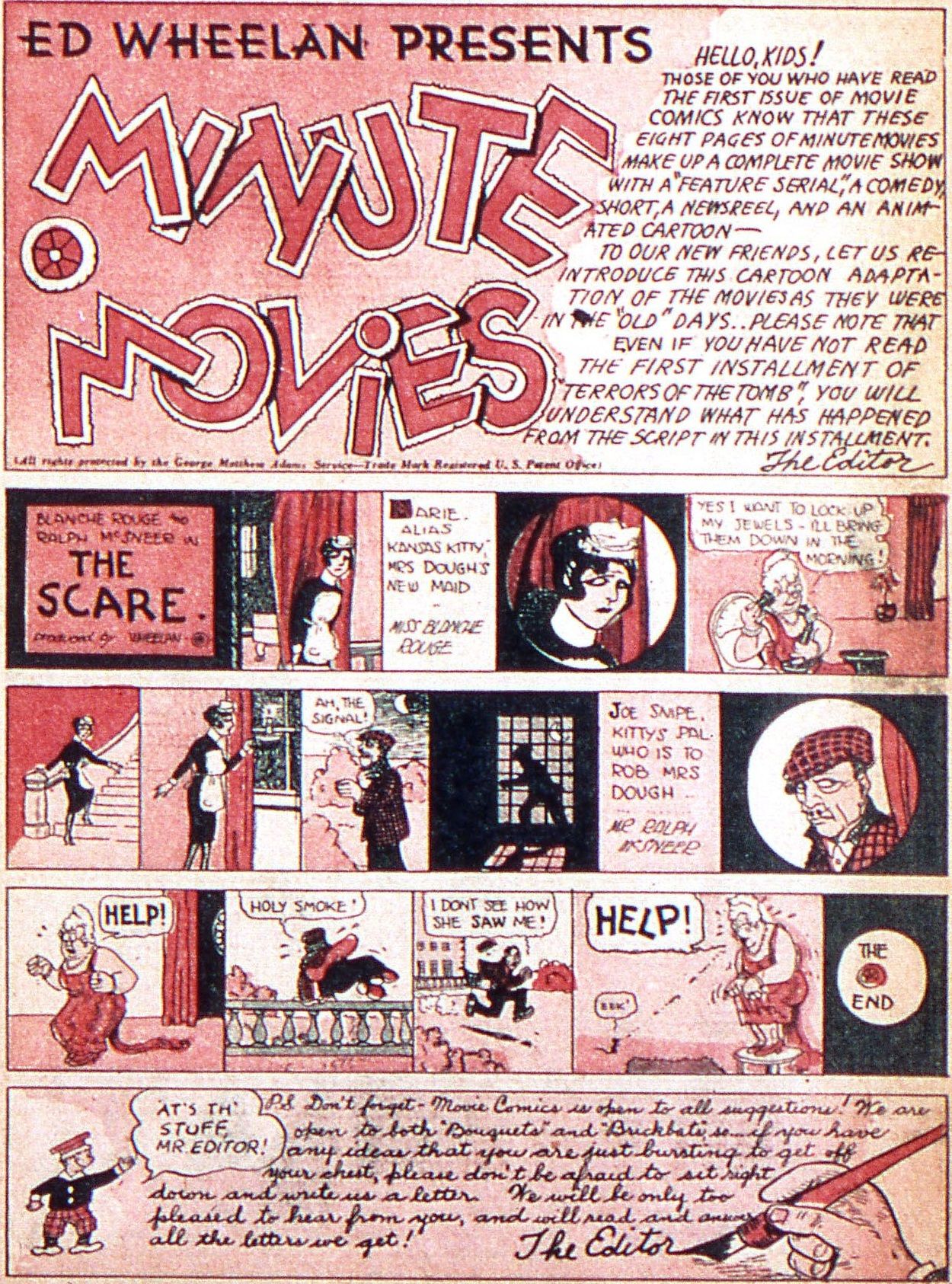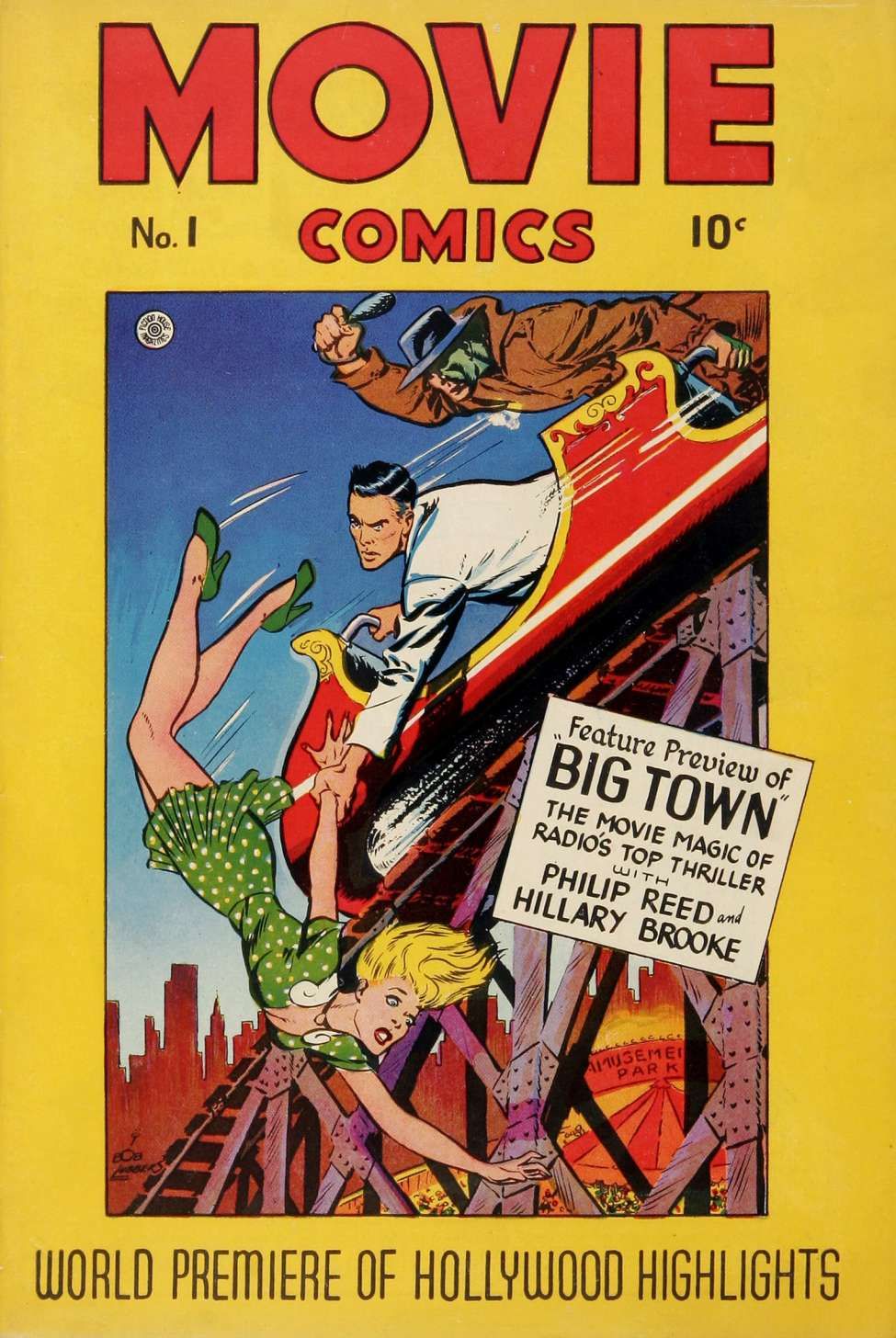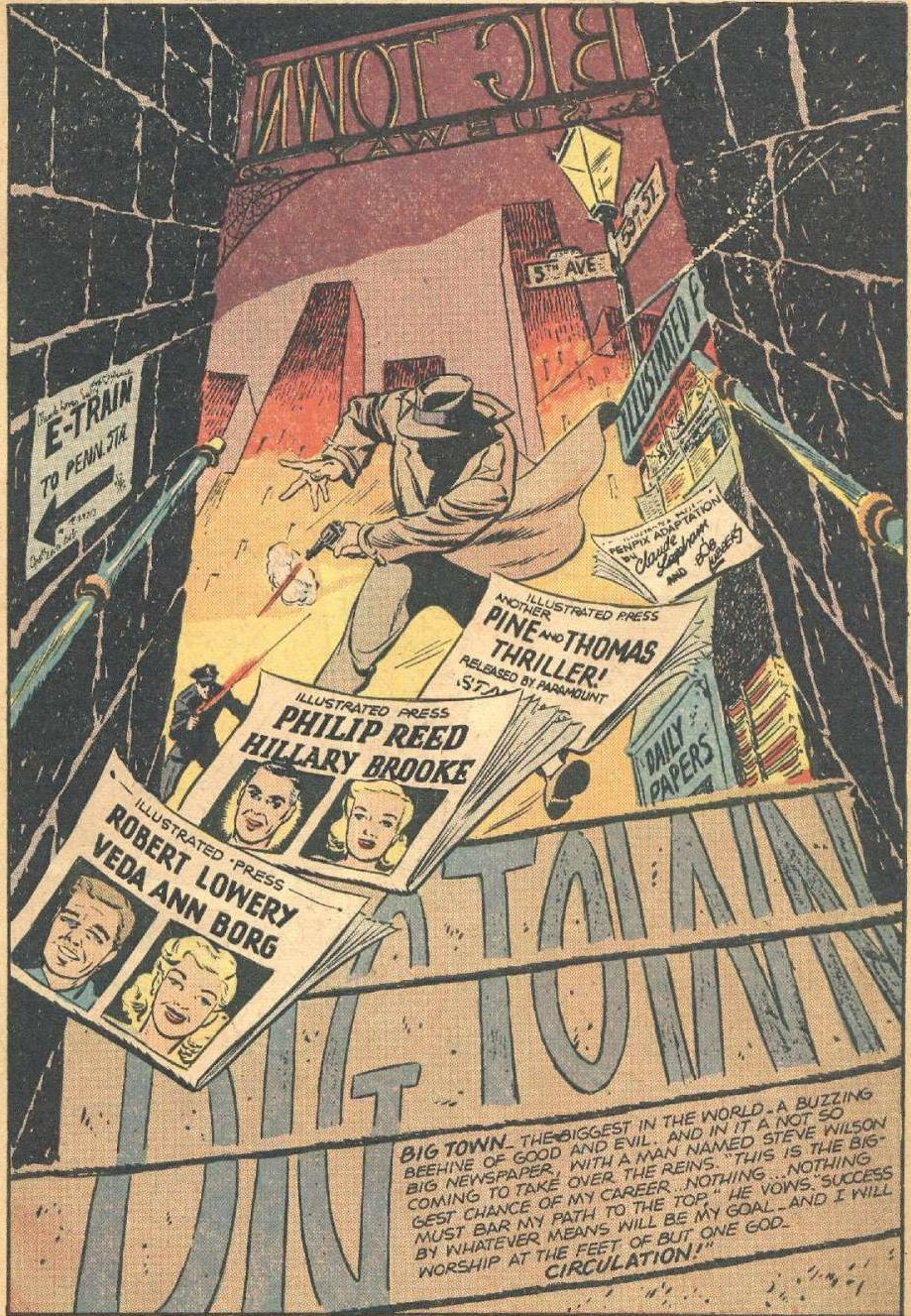Today, we look at the first ongoing comic book series devoted to adapting films to comic books.
This is "Look Back," where every four weeks of a month, I will spotlight a single issue of a comic book that came out in the past and talk about that issue (often in terms of a larger scale, like the series overall, etc.). Each spotlight will be a look at a comic book from a different year that came out the same month X amount of years ago. The first spotlight of the month looks at a book that came out this month ten years ago. The second spotlight looks at a book that came out this month 25 years ago. The third spotlight looks at a book that came out this month 50 years ago. The fourth spotlight looks at a book that came out this month 75 years ago. The occasional fifth week (we look at weeks broadly, so if a month has either five Sundays or five Saturdays, it counts as having a fifth week) looks at books from 20/30/40/60/70/80 years ago.
Today, we head to September 1946 for Fiction House's Movie Comics, the first ongoing comic book series devoted to adapting films into comic books.
Of course, the history of film adaptations in comic books go back a lot earlier than 1946, including one other ongoing series that was VERY similar to 1946's Movie Comics, to the point where it had the same name!
As you may or may not know, in the early days of comic books, comic books were simply collections of comic strips. When comic books really started to get hot around 1937, it was almost purely fueled by those collections. The idea was that whoever had the best connections to a comic strip syndicate would have the best chance of having success. Original comic books stories were seen as just filler to be mixed in with the GOOD stuff. Major Malcolm Wheeler-Nicholson was a visionary who realized that original comic books were the wave of the future, but he was sadly pushed out of his own company right before one of those original character, a chap named Superman, changed the way people viewed original comic book characters forever.
In any event, the giant of early comic books (and the giant of comic books PERIOD for decades) was Dell Comics, and in their series, The Comics, in 1937, they did an adaptation of a Monogram Pictures' film western, Romance of the Rockies, in The Comics #6 (adapted by the great Norman Fallon)...
Dell adapted a number of westerns throughout 1938 (remember, back then, small film studios like Monogram were doing short movies, less than a hour long most of the time, so they were easy to adapt into just a handful of pages using a lot of panels per page).
In 1938, Centaur Publishing launched Little Giant Movie Funnies #1, one of their short-lived attempts at doing landscape comic books. However, it wasn't actually adapting movies, but the hook was that there was so much content and since it was a widescreen format, it was LIKE you were at the movies!
In 1939, Dell adapted Monogram's classiest film at the time, Mr. Wong, Detective, based on the popular Mr. Wong novels of the era. It was so weird to see this fairly high brow detective starring starring an Asian character, showing Americans were willing to watch a film with an Asian lead...only to then have Boris Karloff play the Asian lead and the comic book adaptation by James Gary (which ran over nine installments starting in Popular Comics #38) is pure caricature...
Also in 1939, National Comics (now DC) got in on the action with Movie Comics #1, which adapted a number of movies in each issue.
Now, you might be thinking, "What the hell, Brian? You told me that 1946 was the first ongoing comic book series adapting movies! Have you turned this Look Back feature into a den of lies?!" Well, first off, calm down a bit, it really isn't all that big of a deal. Secondly, here is the trick, National's Movie Comics #1 wasn't really a comic book, at least not in the film adaptation part of the book. You see, they literally just colored in film stills of the actual movie! Here is the adaptation of Universal Studios' The Son of Frankenstein from the first comic...
That's trippy as all heck, right?
There WERE comics in them, but they were Ed Wheelan's brilliant Minute Movies film parodies (that had also appeared in the Centaur Little Giant Movie Funnies)
Okay, so I vote, then, that that's more Fumetti than comics (the American term for pictures put into comic book format with word balloons), so let's move instead to Fiction House's Movie Comics #1 in September 1946....
when the excellent comic book artist, Bob Lubbers, adapted the Paramount hit film series, Big Town, with some great Will Eisner-inspired artwork...
DC later did ANOTHER movie adaption, Feature Films Magazine, in 1950 that WAS a typical comic book adaptation of movies.
If you folks have any suggestions for October (or any other later months) 2011, 1996, 1971 and 1946 comic books for me to spotlight, drop me a line at brianc@cbr.com! Here is the guide, though, for the cover dates of books so that you can make suggestions for books that actually came out in the correct month. Generally speaking, the traditional amount of time between the cover date and the release date of a comic book throughout most of comic history has been two months (it was three months at times, but not during the times we're discussing here). So the comic books will have a cover date that is two months ahead of the actual release date (so October for a book that came out in August). Obviously, it is easier to tell when a book from 10 years ago was released, since there was internet coverage of books back then.

